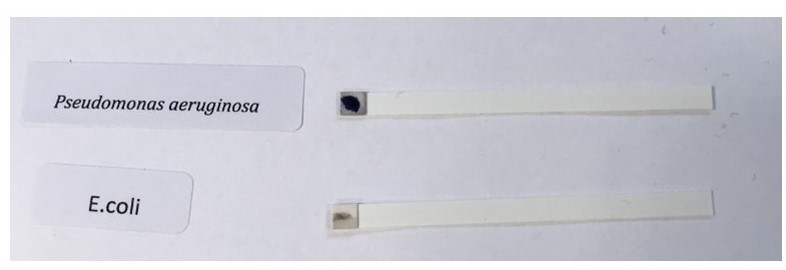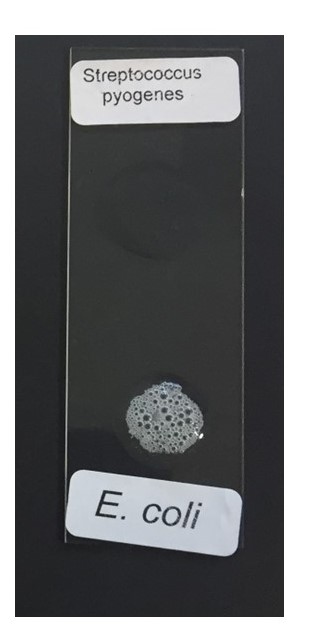27 Biochemical tests: Oxidase and Catalase
27.1 The Use of Biochemical Tests in Microbial Identification
There are many different techniques available to the clinical microbiologist who wishes to make a definitive identification of a potential pathogen, as we have already seen (Section 16.1). Many of these use the fact that different bacterial species have characteristic physiological and biochemical characteristics that can help to identify them.
27.1.1 Oxidase Test
Cytochrome oxidase is a haemprotein enzyme that is involved in the terminal chain of aerobic respiration by transferring electrons (hydrogen) to oxygen, to form water. It is possessed by aerobic and facultative anaerobic microorganisms. The test is helpful in screening Enterobacteriaceae (all negative), Pseudomonas (positive) or Neisseria (positive) species.
The oxidase test (Figure 27.1) uses a dye that can substitute for oxygen as an electron acceptor. In the reduced state the dye is colourless. However, in the presence of cytochrome oxidase and atmospheric oxygen it becomes oxidized and converts to a coloured derivative.

27.1.2 Catalase Test
Catalase is an enzyme that breaks down hydrogen peroxide into oxygen and water. The enzyme is a haem protein expressed by most aerobic and facultatively anaerobic bacteria (excluding Streptococci species) and used to degrade any hydrogen peroxide that is generated during aerobic carbohydrate metabolism.
